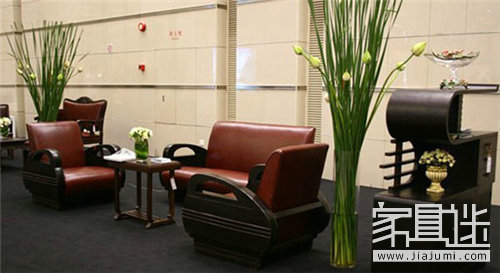Shanghai-style furniture, often referred to as "Old Shanghai Furniture," specifically denotes Western-style and Chinese-Western fusion furniture that emerged and was produced in Shanghai between 1843 and 1949. This includes Western furniture imported into Shanghai, modern furniture manufactured locally during the 1920s and 1930s, and the so-called "Shanghai Attic" style from the 1930s and 1940s. It excludes traditional Chinese antique furniture.
As American scholar Rhodes Murphy once noted, "Shanghai is a place where two civilizations meet, but neither of them is dominant." After the 1930s, both Chinese and Western furniture coexisted in Shanghai, each developing its own unique identity. On one hand, Western-style furniture adapted local characteristics through the craftsmanship of Shanghai’s workshops. On the other hand, traditional Chinese furniture incorporated Western elements, leading to a blend of styles that defined the era.

**Historical Origins**
**1. Emergence in the 1920s**
Before Shanghai's opening, Western-style furniture was largely confined to Beijing, introduced by foreign envoys. Following the signing of the Nanjing Treaty in 1843, Shanghai opened its ports, and the UK, US, and France established concessions along the Bund and Xujiahui. Foreigners flocked to the city, transforming it from a small county seat into China’s largest commercial hub. Western-style buildings and furniture began to appear, first seen in foreign consulates, companies, and wealthy compradors. These pieces were typically luxurious, large, and finely crafted, reflecting Baroque, Rococo, and Neoclassical styles. They were often made of mahogany or oak, with regional variations such as English, French, Spanish, and Jewish influences.
In the early 20th century, China experienced a cultural awakening and national revolution. The middle class and intellectuals in Shanghai began to embrace Western lifestyles, including Western-style homes and furniture. Cultural figures imitated Neoclassical designs, using teak imported from Thailand and India. By the 1930s, even ordinary Chinese families started to adopt Western-style furniture in large numbers. At the time, purchasing furniture and cars was considered a major home investment. Wealthy individuals favored rich, ornate styles, often featuring floral carvings and mahogany—also known as rosewood—crafted by Chinese artisans in a Western style. This marked the rise of what became known as "Shanghai furniture."
In 1932, Yilin Furniture Store on Xiafei Road (now Huaihai Road) introduced a new approach. Owned by a Frenchman named Zhong Huang, the store built a factory to produce plywood, redefining furniture design by replacing solid wood with more flexible materials. This shift led to streamlined, modern designs that combined Chinese and Western aesthetics. The furniture featured clearer lines, multi-colored finishes, metal handrails, and dark hinges, marking the beginning of modern Shanghai-style furniture.
**Related reading:** Characteristics of the National Style

**2. Maturation in the 1930s**
Throughout the 1930s, the continuous evolution of Western-style furniture stores helped refine the Shanghai-style furniture industry. Its key features included: first, the use of frame structures and modern hardware for assembly. Second, a blend of Chinese and Western styles—feet, patterns, and designs drew from both traditions. The range included three-door cabinets, mirrors, chests, dressing tables, glass display cases, window cabinets, round tables, and beds. Influenced by the West, beds transitioned from single-sided to double-sided.
Third, the use of modern industrial materials, such as veneered wood with precious grain patterns, emphasized comfort, practicality, and luxury. Additionally, many furniture companies in Shanghai not only manufactured but also offered interior design services. For example, Jingyi Furniture Store would send staff to measure homes, create detailed sketches, and plan furniture placement accordingly. Huaxin Woodware Co., Ltd., founded in 1919, became renowned for designing interiors of famous cinemas like Cathay Pacific and Shanghai Concert Hall. Even in the 1940s, the Majestic Cinema’s seating was crafted by Huaxin, while Daguangming Cinema’s decor was handled by another prominent Shanghai furniture store.
**3. The Golden Age in the 1940s**
The 1930s and 1940s marked the peak of Shanghai-style furniture, driven by advancements in industrial technology. During this period, Art Deco influenced the development of "Attic-style" furniture—modern, practical, and compact yet functional. Decorative elements were simplified, and materials like teak, Liuan wood, and plywood were widely used. These pieces were designed as combinations, becoming classic symbols of Shanghai-style furniture and remaining popular even today.
JIANGMEN XINXIN METAL PRODUCTS CO., LTD. , https://www.bbqoutdoorgrill.com